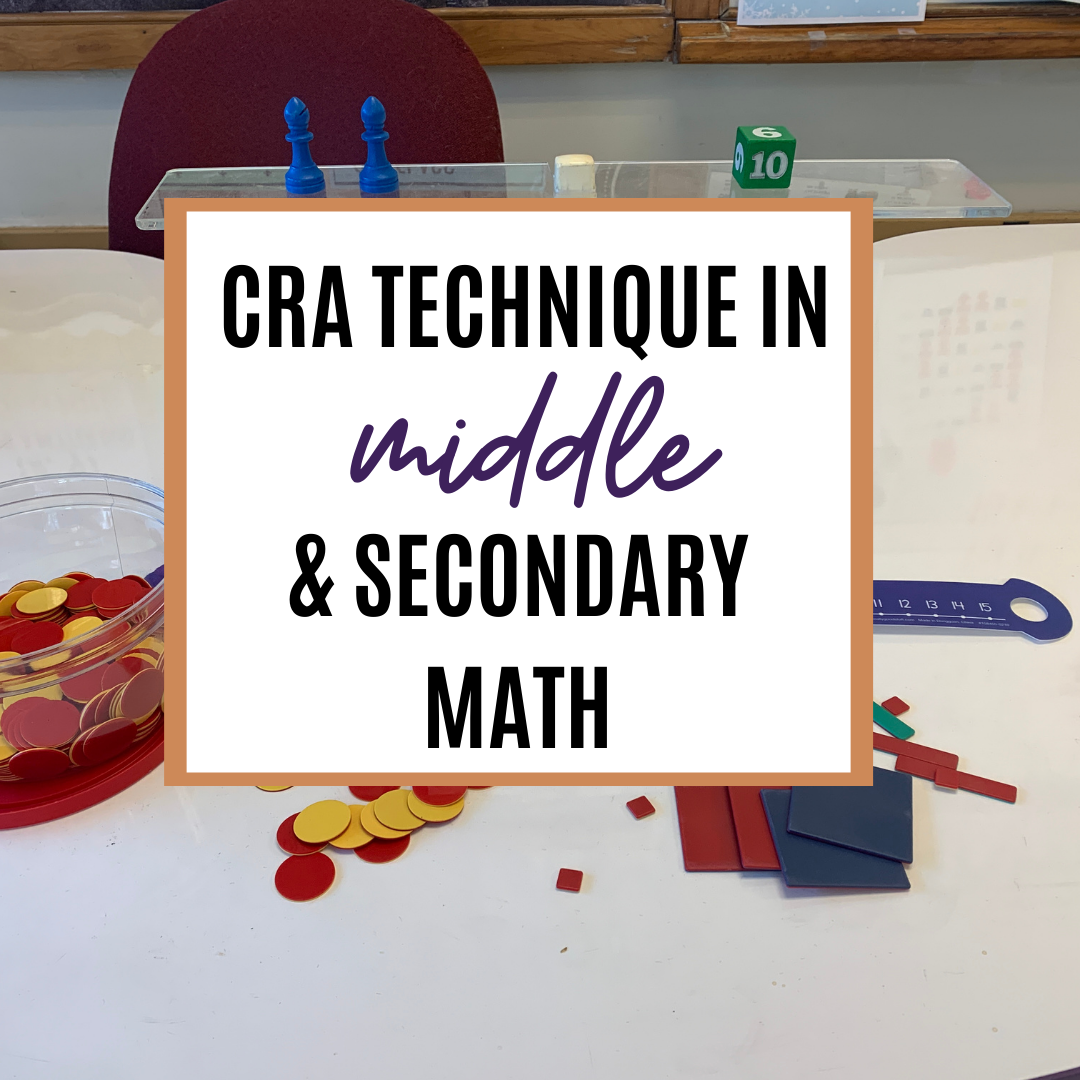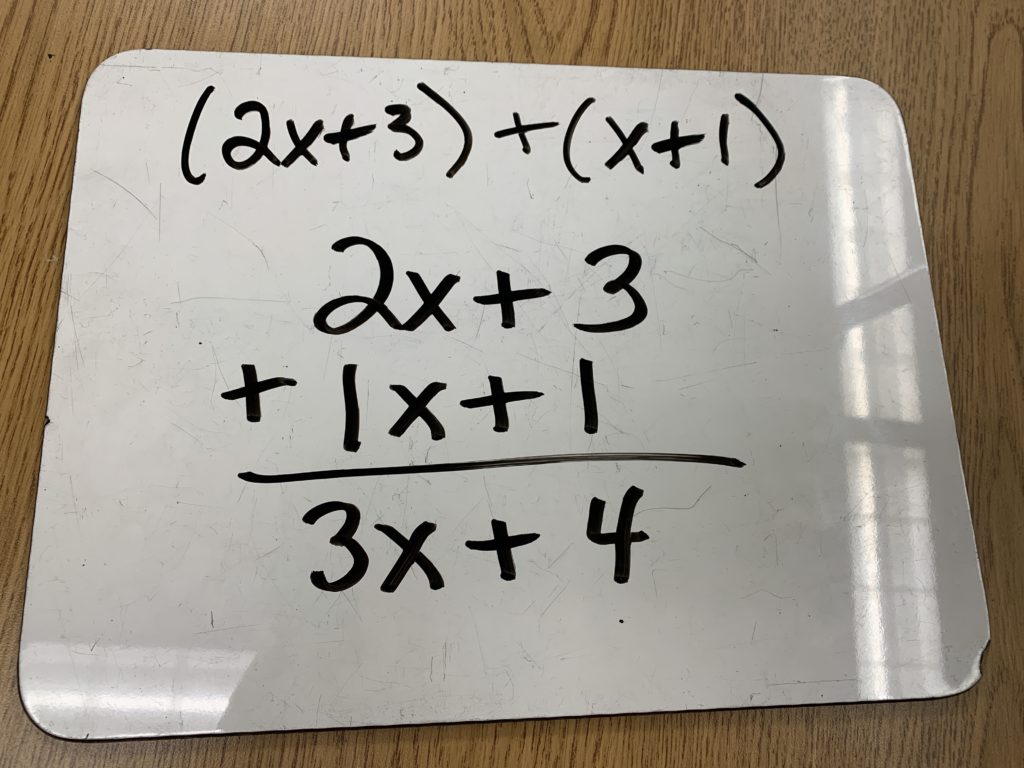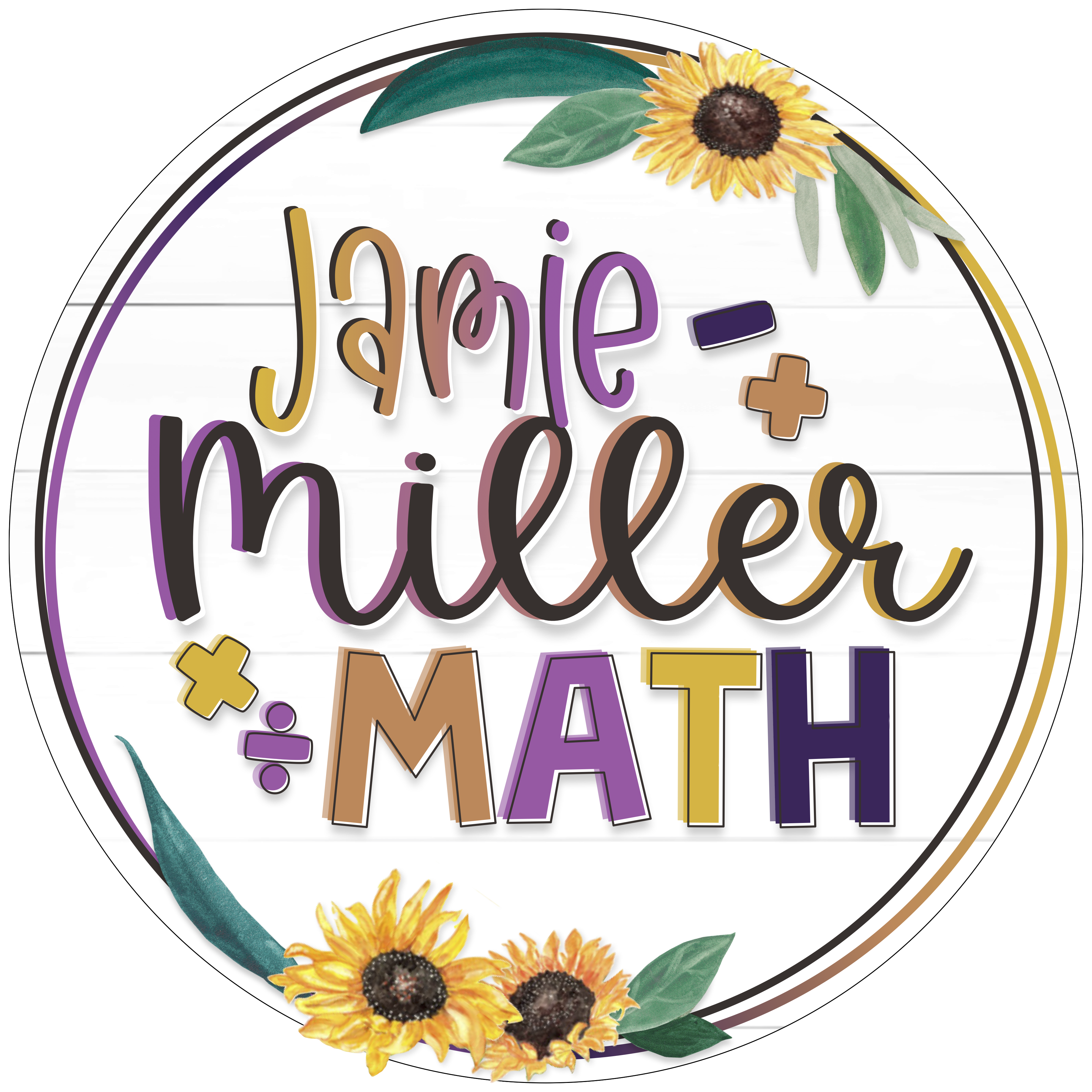
CRA Technique in Middle & Secondary Math
If I’m being honest, I wish I would have learned about the CRA technique ten years ago but I guess better late than never, right!? I am by far not an expert on this technique as I am still learning how to implement it in my classroom, but it is a powerful way to differentiate and meet the needs of all your students.
What is it?
The CRA technique breaks down the process of learning math into three components: Concrete, Representational, and Abstract. Students start learning concretely with manipulatives. Eventually, they move to representational (transforming the concrete manipulatives into drawings) and then finally to abstract (using math symbols, variables, operations, etc.). This is a fluid process; some students may spend a lot of time in the concrete stage whereas others may quickly progress to abstract. The important thing to note here is that it’s okay for students to move at their own pace. They may even need to move backward to move forward.
How does it work?
I utilize the CRA technique during math workshop so I will share with you a 7th grade math example:
Expressions Unit, Math 7
Essential Question: How can you use numbers and symbols to represent mathematical ideas?
Lesson Objective: Students will be able to add and subtract linear expressions.
Focus Mini Lesson (before beginning math workshop)
I would present students with algebra tiles and give them about 5 minutes to explore and try to solve a few adding and subtracting expressions problems (with no direction or instruction from me). We would come together for the remaining 5 minutes to go over the problems.
Guided Math Teacher Station
- We would all start with the concrete model of adding and subtracting linear expressions working through a few problems together. As students continue to work through problems at their own pace, I would give them choice. If they are feeling confident to move to representational or abstract, then they can. Sometimes students do need a push but often, I have found, students know exactly what they need in the moment.
- Concrete– Modeling adding and subtracting expressions with algebra tiles (see picture)
- Representational– Transforming the concrete model into a picture (see picture)
- Abstract– Modeling how to add and subtract linear expressions with the symbols: numbers, operations, and variables (see picture)

Why should you use it in your math classroom?
- Entrance Point & Success– Using the CRA technique offers all students an entrance point for any math lesson. Starting with manipulatives to concretely learn a skill allows for all students to visually see and understand a concept and be successful.
- Student Voice & Choice– Using the CRA technique gives students a voice and choice in how they learn and engage with the math skills presented. Students can move through the model as they see fit (with encouragement from you of course), building their confidence along the way.
- Differentiation– Using the CRA technique is one of the easiest ways to differentiate any math lesson and support your diverse learners. Please note, you do not need to utilize the math workshop model and guided math in order to use this technique but they definitely complement one another.
My Favorite Manipulatives (affiliate links)
Below are some of my favorite manipulatives for the CRA technique in the middle school and secondary math classroom:
Concluding Thoughts
Too often manipulatives are associated with only elementary school but I hope this blog post serves as a great reminder that manipulatives are powerful for middle school and secondary math classrooms as well. Let me know if you give the CRA technique a try! Feel free to share questions or tips and tricks below if you use this model in your classroom.




